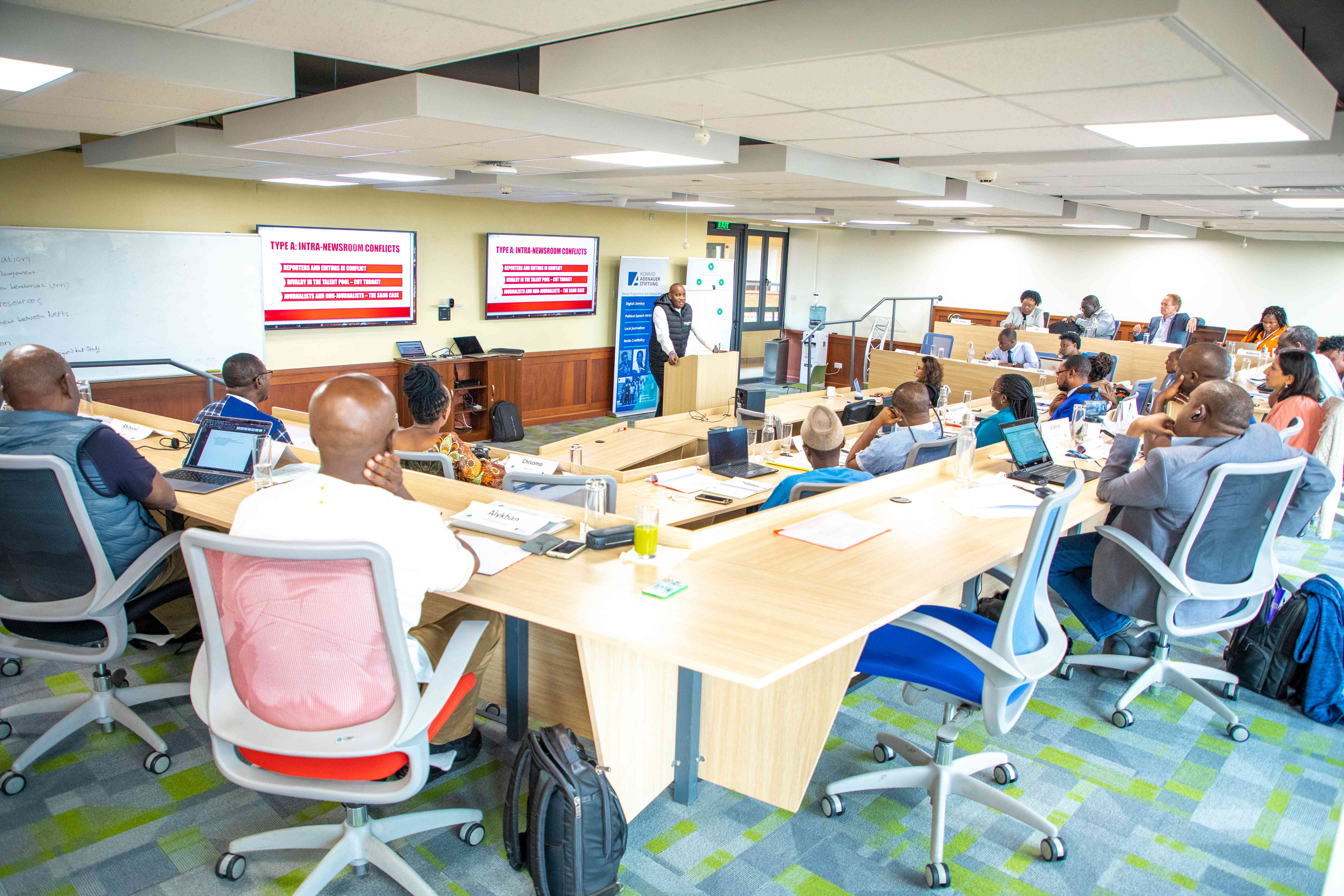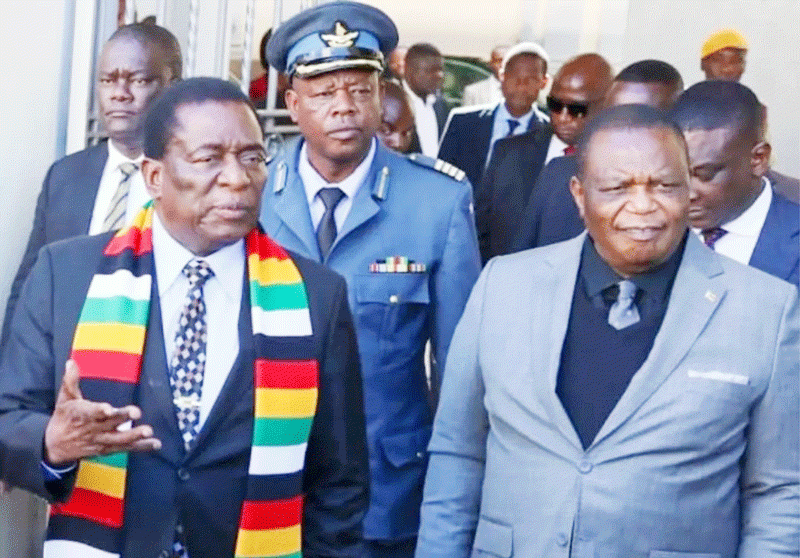
A FEW weeks ago, Aga Khan University Graduate School of Media and Communications and Konrad-Adenauer-Stiftung (KAS) co-ordinated and hosted a professional development course for media managers in Kenya.
Dubbed, 'Managing conflict in today’s newsroom' the objective of the course among others was to help editors manage people and conflicts within the newsroom in a progressive way.
Realising that journalism is a critical foundation for social change, more often than not; everyone is more concerned about the product, ignoring content creators themselves.
“So many newsroom managers have been thrown into the cold water — they might have been good journalists but not necessarily good managers and there is no real literature on how to manage newsrooms. In many newsrooms, there are always conflicting issues surrounding gender, political differences and sometimes ethnic issues and how to manage that as a newsroom manager becomes of great importance,” said KAS director of the Media Programme Sub-Sahara Africa Christoph Plate.
A lot has been said about journalists and their “disorganised” lives, egos and arrogance, but little is told about the environment that they spend much of their time in, which has the potential of influencing the behaviour they exhibit.
A story is told of a chief executive officer who went to a public event with a popular television presenter from his stable, only to receive a bolt from the blue when people gave him their mobile phones to be the designated photographer.
Recently, Zimbabwean social media outlets shared an article by Diana Makokha, a Kenyan writer, advising against dating journalists because “they are boring humans.”
The scribes’ world was divided, with some agreeing, while others disagreed, and in some cases the audience was actually fighting in their corner.
- Malawi chiefs shut down Chinese owned mines
- Malawi chiefs shut down Chinese owned mines
- Byo hosts annual media summit
- Feature: Pigeon rearing changes man’s life
Keep Reading
But the training which had a mix of editors from 15 countries revealed that the underlying issues affecting newsrooms and journalists in particular are all the same and there is high demand for better newsroom management.
Usually regarded as all-knowing and difficult to manage, sustaining their lives in furnace-like conditions of chasing deadlines and sometimes mean and rude sources, not much has been done to focus on journalists‘ well-being, mental illness and even personal lives, hence the view that some of them are odd human beings.
Diana Makokha said: “editors are not kind humans, they can be very unforgiving.”
Judging by discussions from 14 countries during the training, newsrooms present conditions for conflict mutation.
That being said, there seems to be consensus on the fact that journalists‘ mental health issues have been ignored for a long time.
Personality wise, scribes appear strong, but most of the time they could be broken inside. How then do we create a safe environment for our beloved journalists?
Toxic roots in newsrooms
Newsroom toxicity is grounded in several key factors including just the nature of media work, how people relate to each other, personality of journalists as well as how they relate to society.
These issues develop due to failure by media managers to build teams that coexist and sometimes hierarchy in the newsroom may stifle innovation and openness.
All these pressures pile on journalists who at the end of the day are required to produce publishable stories.
Evidently, journalists are among the forgotten and often suffer in silence, hence, the miserable characteristics which manifest in different ways, alcoholism, chubbiness, and introvert behaviour as well as dependency personality disorder.
Kenyan broadcast trainer and media consultant Joseph Warungu advises on the need for media organisations to create a listening and tracking environment.
Mental health issues affect the product greatly, thus media houses need to change their style of leadership and adopt a more receptive one.
While he acknowledges difficulties in managing scribes, Warungu says nothing matters more than taking care of journalists who are the face of content.
“It’s difficult to manage journalists; they all have an opinion on everything. Often, they question everything. They are stubborn people, and if you use brute force it will not work. Editors need to be in touch with the atmosphere in the newsroom on a regular basis. There is a tendency for editors to shut themselves away in their small offices or endless meetings. Media organisations need to recognise mental health as an issue so that there is no shame in seeking help. We also need champions for mental health in the newsroom,” Warungu said.
Plate concurred with Warungu highlighting the need to build a safe newsroom in the 21st century newsroom where journalists feel motivated and where their mental well-being is considered.
“In many newsrooms, there are always conflicting issues surrounding gender, political differences and sometimes ethnic issues and how to manage that as a newsroom manager becomes of great importance. Newsroom managers need to build strong teams as toxicity threatens journalism. In a toxic environment, nobody feels responsible and more mistakes are made, affecting the quality of journalism,” he said.
Gender issues in the newsroom
Gender has been arguably a hot topic in media management and newsrooms. Stretching from representation, operational gender policies and coverage of news sources to sexual harassment. There has been a strong call and demand to make the newsroom safer for women.
To date, many newsrooms across Africa are grappling with sexual harassment and in many cases issues and reports remain unresolved forcing women to abandon their passion in journalism.
Not to insinuate that men are not harassed, but evidence confirms women are the most vulnerable.
Maybe if stern action was being taken and stringent policies existed in newsrooms, this discussion could have been long forgotten.
Violations affect mental stability; traumatise victims, often leaving permanent scars that hinder performance and even relations.
According to a research by Women in News, the most common source of sexual harassment is direct supervisor and higher management 41%, fellow employee 38%, followed by news sources 17%.
The report also reveals that many cases go unreported and “the most common reasons for not reporting are fear of negative impact (16,7%) no reporting mechanisms available (14,9%) and not knowing how to report (13,1%).”
Nation media board member Wangethi Mwangi said sexual harassment had huge implications for a media organisation.
Erosion of brand name and public image which can lead to negative impact on stock prices, decreased morale, increased absenteeism are some of the consequences of a sexual harassment-infested newsroom.
Wangethi encouraged newsrooms to build mechanisms which enhance safety for journalists in the workplace.
"Prevention starts with a culture of workplace civility and committed and engaged leadership. Trust and accessible complaint procedures are key to extinguish sexual harassment in newsrooms," he said.
Creating a safe newsroom
Chairperson of the Kenya Editors Guild Linus Kaikai said newsrooms should be built on strong interpersonal relations, creating a friendly relationship among journalists. Increasingly, newsroom editors should pay attention to their teams, and from time-to-time check their well-being.
“The 21st century newsroom should be based on good chemistry on delivering the work in the newsroom,” Kaikai said.
For Warungu, management style has to change and be more accommodative. Content with impact favours journalists who enjoy peace of mind.
"Have an open door policy; speak to your teams regularly, have people to share their experiences. Editors also forget that when reporters have a traumatic story, they may suffer emotionally and conflict may arise. These often lead to a difficult working environment; get them to speak to somebody," he said.










